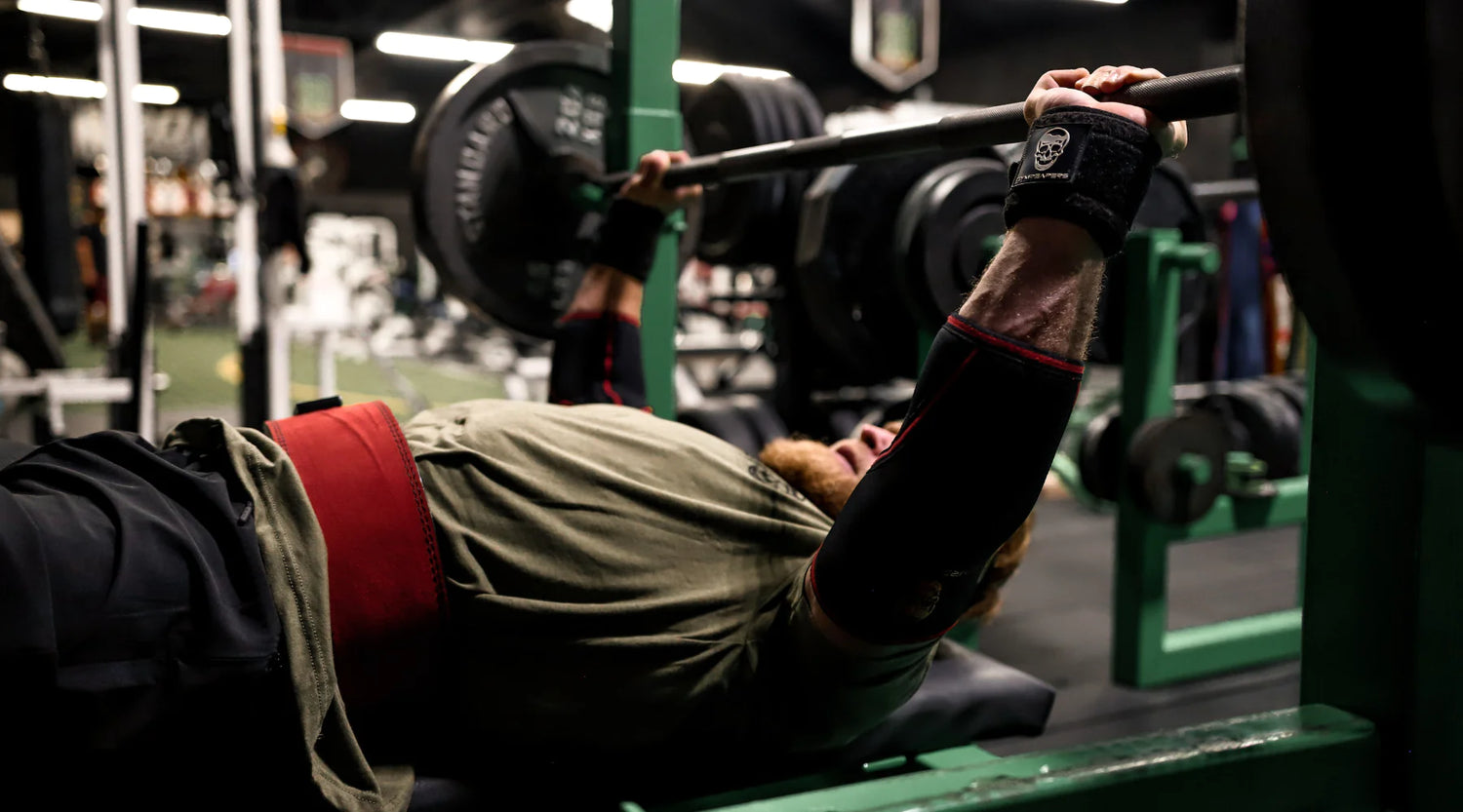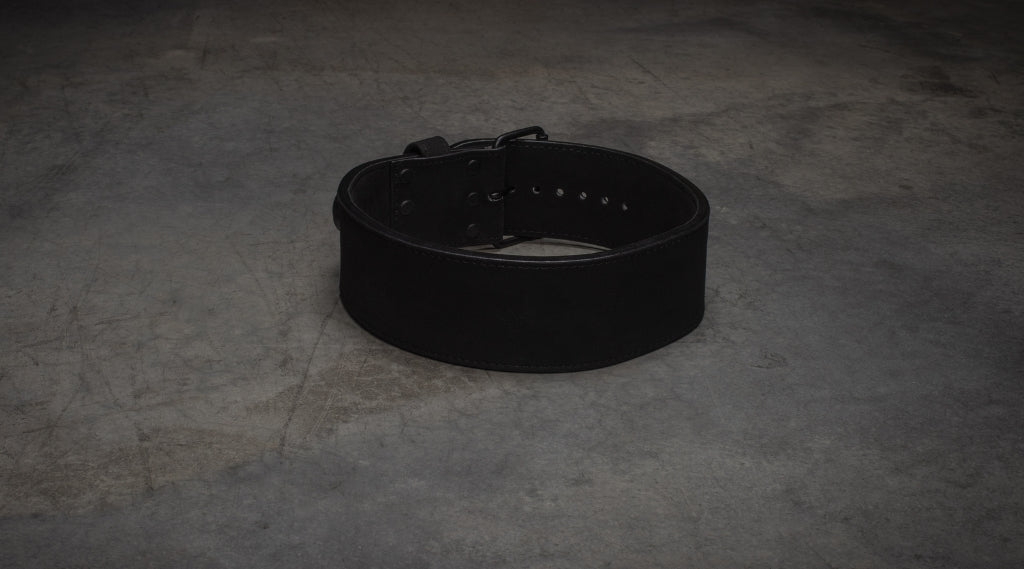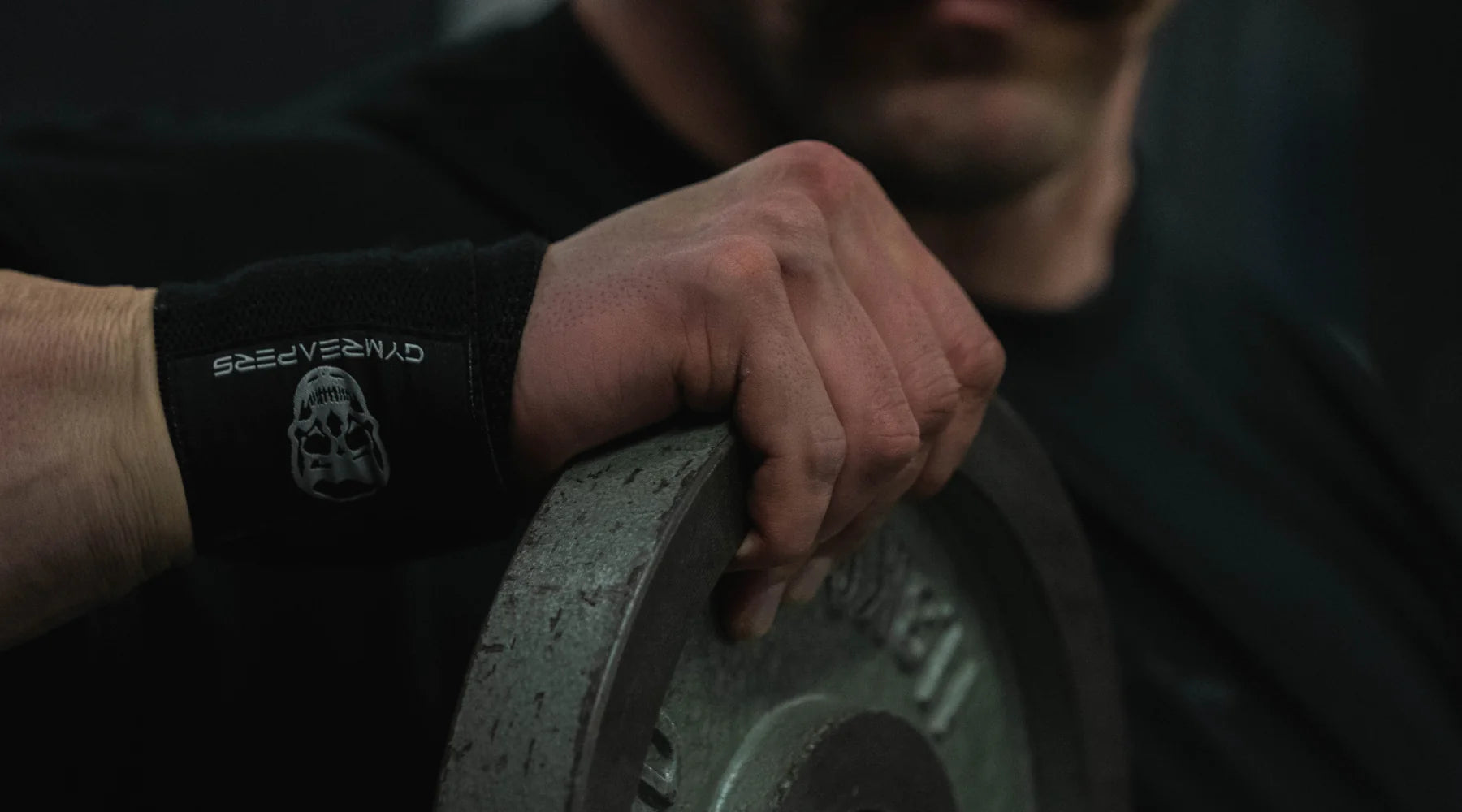Some lifters feel that wearing a lifting belt is cheating because it’s allowing you to lift more weight than your body can naturally handle…
However, wearing a lifting belt, either during training or competition, is NOT cheating.
If you’re an experienced lifter with good technique, a lifting belt can help you lift heavier loads more safely. If you’re a competitive strength athlete, lifting belts are allowed at all levels of competition (although rules around the type of belt you wear exist).
Below I’ll cover the controversy of wearing a lifting belt and tell you why wearing a lifting belt in training or competition is not cheating.
Lifting Belts: Addressing The Controversy

Some individuals feel that a lifting belt allows you to lift more weights, just like lifting straps or knee wraps, and therefore must be cheating as you are not 100% lifting the load.
This is a flawed way of looking at this debate, and instead, you should view most lifting equipment as a way to fully realize your strength potential.
If you view lifting weights like any other sport, such as running, the same line of thinking applies.
For example, If you’re going to sign up to run a race, you’re not going to compete barefooted.
Sure, you might train some of your sessions barefooted to strengthen the muscles in your feet.
But when you show up on race day, you’re going to wear the best running shoes possible in order for you to run the fastest.
It’s the same with a lifting belt.
If you’re trying to increase your maximal strength (how much you can lift for a particular exercise), then you want the right equipment that allows you to realize your strength, and at the same time, keep you safe.
2 Reasons Why Wearing A Lifting Belt Isn't Cheating

It’s Legal in All Sports
All lifting sports allow lifting belts. Powerlifting, weightlifting, Strongman//Strongwoman, CrossFit; you name it, there is no rule against wearing belts.
With that said, each governing body does have their own specification that a belt must be approved and be a certain type. But lifting belts overall are not illegal to wear.
Most belt manufacturers will say whether or not their belts are approved for certain sporting events.
For example, the Gymreapers 10mm Lever Belt is IPF Approved, which means you can wear it at any level of powerlifting.
Again, wearing a belt in competition or training is no different than when an athlete wears some other piece of their equipment (a helmet visor to help them keep sun out their eyes or a swim cap to increase aerodynamics while swimming).
Allows Your To Realize Your Strength, Rather than Increase It
Wearing a belt simply allows you to stabilize your core and brace harder against the belt, which in turn increases core stability.
This may be tough for some people to grasp, but when you squat 20lbs more with a belt on than without one, it is not because the belt lifted the extra 20lbs.
The core strength and stability that you tap into while wearing a belt properly is generated by your muscle tissue.
By allowing you to tap into more muscle tissue and to also prevent loss of torso stability, you are able to push harder during your set.
This could mean you lift more weight on the bar or you perform more reps in a set than you would without a belt.
How Much More Can You Expect To Lift With A Belt?

The actual amount may vary, but some lifters may see an increase of 10-15% on top of what they can lift without a belt.
Untrained lifters may not see a huge difference lifting with vs without a lifting belt, other than maybe their mentality when they approach a weight as they may feel stronger with one on.
This is because many untrained lifters do not understand how to properly brace and contract their core muscles to push outwards against the lifting belt, negating the effectiveness of the belt.
When beginners learn how to properly breathe and brace effectively, then they will surely see an improvement in the amount of weight they can lift (and do it with better form, too).
Trained lifters will often use belts when they are training in heavier percentages (80% or more), and may have different styles of belts based on the exercise they are performing or their sport, which all can offer varying degrees of support.
For example, a leather lever or prong belt is a extremely supportive, and is often used during heavy compound exercise where you want max out (exercises like squats and deadlifts).
Those belts may lack flexibility though, which is why Olympic weightlifters will opt to use a tapered leather belt or a nylon belt so that they can still get into deeper end ranges of certain movement (like the snatch), but still have some level of back support.
Are Lifting Belts Allowed In Competition?

Lifting belts are allowed in competition, however different sports organizations have different rules around the specifications a belt must have to be approved for use.
It is important to understand the specific rules for the type of competition you are competing in so that you can adhere to the approved specifications and make sure that your lifting belt manufacturer is on the approved lifting belt list.
Note: All Gymreapers lifting belts are approved by the International Powerlifting Federation (IPF).
Powerlifting
Powerlifting belts can come in a variety of styles, such as lever or prong style fastening systems.
All powerlifting belts however must adhere to the below standards, which are set forth by the IPF.
Most organizations use the IPF rules as the standard for their own, however you should confirm your belt requirements if you are competing in another organization.
- Belts cannot be wider than 10cm (4 inches)
- Belts cannot be thicker than 13mm
- Belt buckle cannot be wider than 11 cm (inside) and 13cm (outside)
- Tongue loop on the belt cannot be wider than 5cm
- Distance between the belt buckle and far end of tongue loop cannot exceed 25 cm
- Belts can be made of leather or nylon
Powerlifting Belt Recommendations
- 10mm Single Prong Belt - This high-grade leather belt is made for serious heavy lifting, and offers great support and rigidity for the strongest of lifters. This belt is ideal for powerlifting who compete or lifters who want a supportive belt to train compound lifts in.
- 10mm Lever Belt - This belt is made from premium leather, offering the most elite levels of support, durability, and performance. The lever belt allows you to truly customize your fit and keep that secure fit under the heaviest of loads.
Weightlifting
Weightlifting belts are more flexible than powerlifting belts, and while they still provide support may not be as supportive as a very rigid belt. This tradeoff allows weightlifters to perform dynamic movements with heavy loads, as some belt flexibility is needed.
Olympic weightlifting belts must also meet specific requirements (page 22) set by the International Weightlifting Federation (IWF), which is the golden standard that many international weightlifting associations use as well (USA Weightlifting uses the same requirements).
Belts can be from any belt manufacturer, as long as they meet the below belt requirements:
- No wider than 12cm (4.75 inches)
- Belt must be worn on the outside of the lifter’s costume (singlet)
Weightlifting Belt Recommendations
Both belts below are approved by the IWF and USAW.
- 7mm Tapered Weightlifting Belt - This leather belt offers high support, while also coming in a tapered fit to allow you to sit low into heavy squats, snatches, and cleans.
- Quick-Locking Weightlifting Belt - This nylon belt offers good support and versatility for a variety of lifts. This belt is great for weightlifters who also want a versatile belt they can wear for other movements like functional fitness or accessories.
CrossFit, Strongman/Strongwoman, Bodybuilding
There are no rules around belts that can and cannot be used in either of the sports. Athletes can choose to wear whichever style and type of belt they want in both training and competition).
Frequently Asked Questions
Will Using A Lifting Belt Weaken Your Core?
No, a lifting belt allows you to contract your core muscles harder and increase their ability to generate more force to provide stability. It is key to not always use a lifting belt, as you will want to have some training phases where you learn to brake without one to not become overly dependent.
When Should You Use A Lifting Belt?
Once you have experience lifting without a belt and knowing how to brace under load, you could start using a lifting belt when you are training with over 80% of your max. This can vary based on the lifter and their needs, as long as you are not training in a belt so much that you become dependent on it.













Leave a comment
All comments are moderated before being published.
This site is protected by hCaptcha and the hCaptcha Privacy Policy and Terms of Service apply.